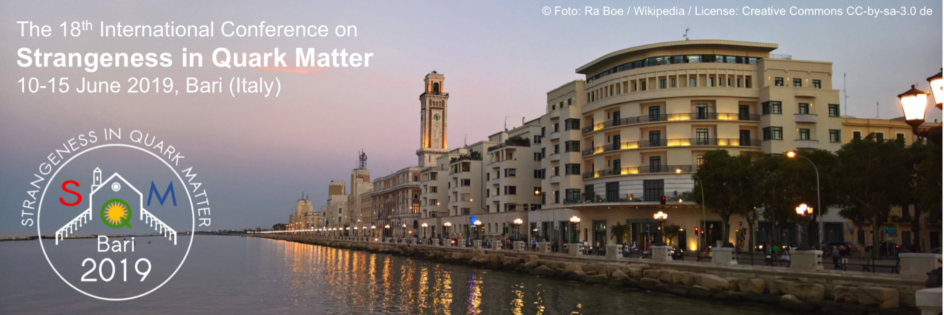Speaker
Description
The research for hypernuclei and their production mechanisms open new
opportunities for nuclear/particle physics and astrophysics. The hyperons
influence many nuclear properties in finite nuclei and in neutron stars
(infinite nuclear matter). In particular, hypernuclei allow to explore
the many-body aspects of the strong three-flavor interaction at low energies.
We review the main processes leading to the production of hypernuclei in
nuclear reactions: In violent high-energy interactions leading to
fragmentation and multifragmentation of nuclear matter they can be
abundantly produced [1,2]. The binding energies of hyperons influence the
hypernuclei formation [3] and this gives a chance to evaluate experimentally
the hyperon effects in nuclear matter. The most promising process for such
a research is a disintegration of large excited hyper-nuclear residues
produced in peripheral relativistic nucleus-nucleus collisions. Besides,
there is a coalescence of hyperons with other baryons into light clusters.
We use the transport, coalescence and statistical models to describe the
whole process, and demonstrate the important regularities of the hypernuclei
formation and the advantages of such reactions over the traditional
hypernuclear methods: A broad distribution of predicted hypernuclei in
masses and isospin allows for investigating properties of exotic hypernuclei,
as well as the hypermatter both at high and low temperatures. We point at the
abundant production of multi-strange nuclei that can give an access to
multi-hyperon systems and strange nuclear matter. The realistic estimates
of hypernuclei yields in various collisions are presented. There is a
saturation of the hypernuclei production at high energies [1], therefore,
the optimal way to pursue this experimental study is to use the
accelerator facilities of intermediate energies, like FAIR (Darmstadt) and
NICA (Dubna).
[1] A.S. Botvina, et al., Phys. Rev. C95, 014902 (2017).
[2] A.S. Botvina, et al., Phys. Rev. C94, 054615 (2016).
[3] N. Buyukcizmeci, et al., Phys. Rev. C98, 064603 (2018).
| Track | Others |
|---|
